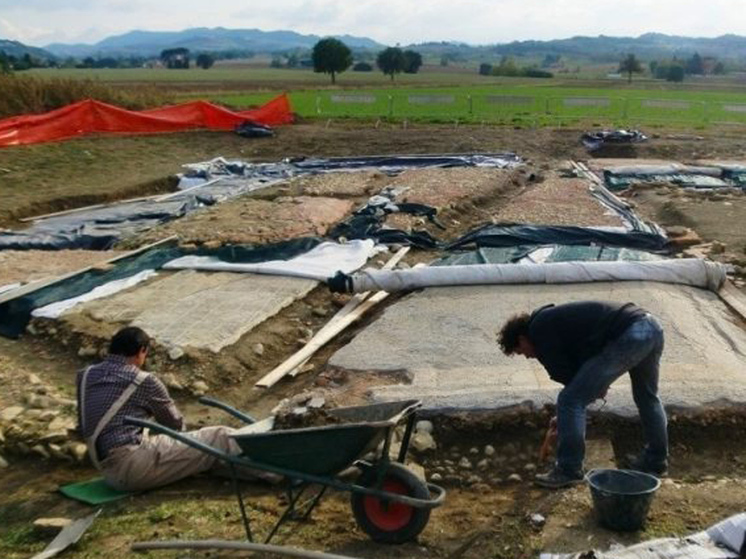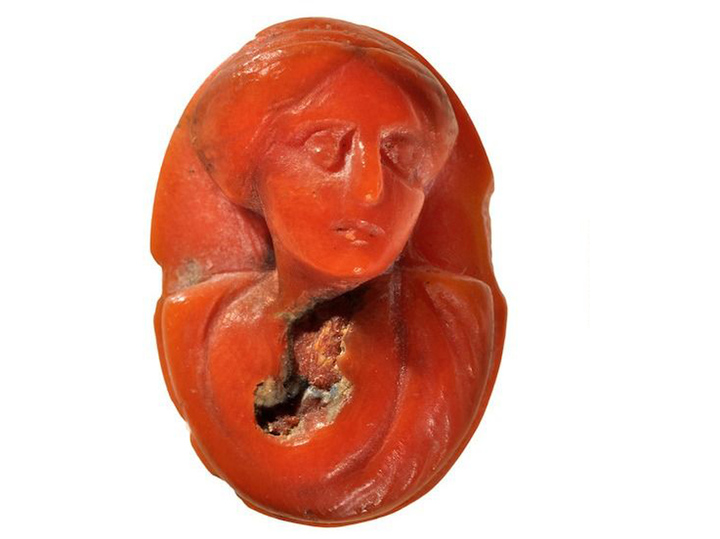Scientists amazed by “extraordinary” finds
Unique gemstones found by Italian archaeologists in Klaterna, known as “Northern Pompeii”.
 Photo: ARCA Bolognese Apennines < /span>
Photo: ARCA Bolognese Apennines < /span>
Italian archaeologists have unearthed 50 unique pieces of jewelry during ongoing excavations at the ancient Roman site of Claterna, known as “Pompeii of the North,” Arkeonews reports.
3,000 coins were also found along with the jewelry. Even more significant is the discovery of 50 engraved gemstones, suggesting the possible existence of a workshop in the city that specialized in their production.
While excavating the archaeological site of Claterna, strategically located along Via Emilia between the colonies of Bononia (Bologna) and Forum Cornelia (Imola), archaeologists made extraordinary discoveries that promise to transform the site into an archaeological park unprecedented in Northern Italy.
However, the pearl of the find is the exceptional “quinarium,” dating back to 97 BC. This coin features the inscription «Winged Victory» in detail. on the shield resting on the trophy. The obvious presence of the inscription «ROMA» indicates the celebration of military victories and the city's connection with the Roman power.
The discovery was announced on the web page of the Italian Ministry of Culture.
“We are faced with the largest unstratified archaeological zone in northern Italy , said Lucia Borgonzoni, Undersecretary of State of the Italian Ministry of Culture, in a statement. – Given the importance and number of finds discovered so far, we can probably talk about northern Pompeii.
Lucia Borgonzoni stated that «the finds contain very valuable and significant materials.» The discovery of silver coins and colored gemstones, presumably of local production, suggests that Klaterna was not only a transit center, but also a busy commercial center.
 Photo: ARCA Bolognese Apennines < /span>
Photo: ARCA Bolognese Apennines < /span>
Archaeologists also unearthed dozens of colored gemstones engraved with images of various deities and important structures , including the same theater.
So far, researchers have only excavated about one-tenth, or about 44 acres (18 hectares), of the city; Excavations at this site will continue. The ministry hopes to restore the theater in the future.
The stated goal is to transform Klaterna from an archaeological site into an archaeological park of international importance. Claterna, covering an area of 18 hectares, is a candidate to become the largest unstratified site in Northern Italy. Deputy Minister Borgonzoni underlined the unique character of the site, announcing funding from the Ministry of Culture for new activities of approximately 450,000 euros for the period 2022-2024.
Probably founded as an important transit point between the two main colonies, Klaterna, as and many other settlements along the Via Emilia, occupied the usual position corresponding to the day's march of the Roman legions. Its location was between the village of Maggio and the Quaderna stream, which gave it strategic importance in the Roman road network.
With the beginning of the Roman colonization of Cisalpine Gaul and the construction of the Via Emilia, the Claterna saw the light of day as a result of the merger of another important route, possibly the Via Flaminia Minor, which crossed the Apennines and connected the Via Emiliana with Arezzo. Founded in the early 2nd century BC, Klaterna initially developed as a modest village, subsequently gaining municipal status in the 1st century BC. and becomes the capital of the region between the rivers Idice and Sillaro.
Like many cities of the Roman Empire, Klaterna began to decline during the turbulent crisis of the 3rd century. Suffering from the economic and political influence of Roman institutions, as well as from the barbarian invasions that characterized the era, the city gradually became impoverished and its population decreased. This process culminated in its final abandonment between the 5th and 6th centuries, in the period following the fall of the Western Roman Empire. Klaterna has become a rare example of a disappeared city in the Emilia-Romagna region.


























































Свежие комментарии